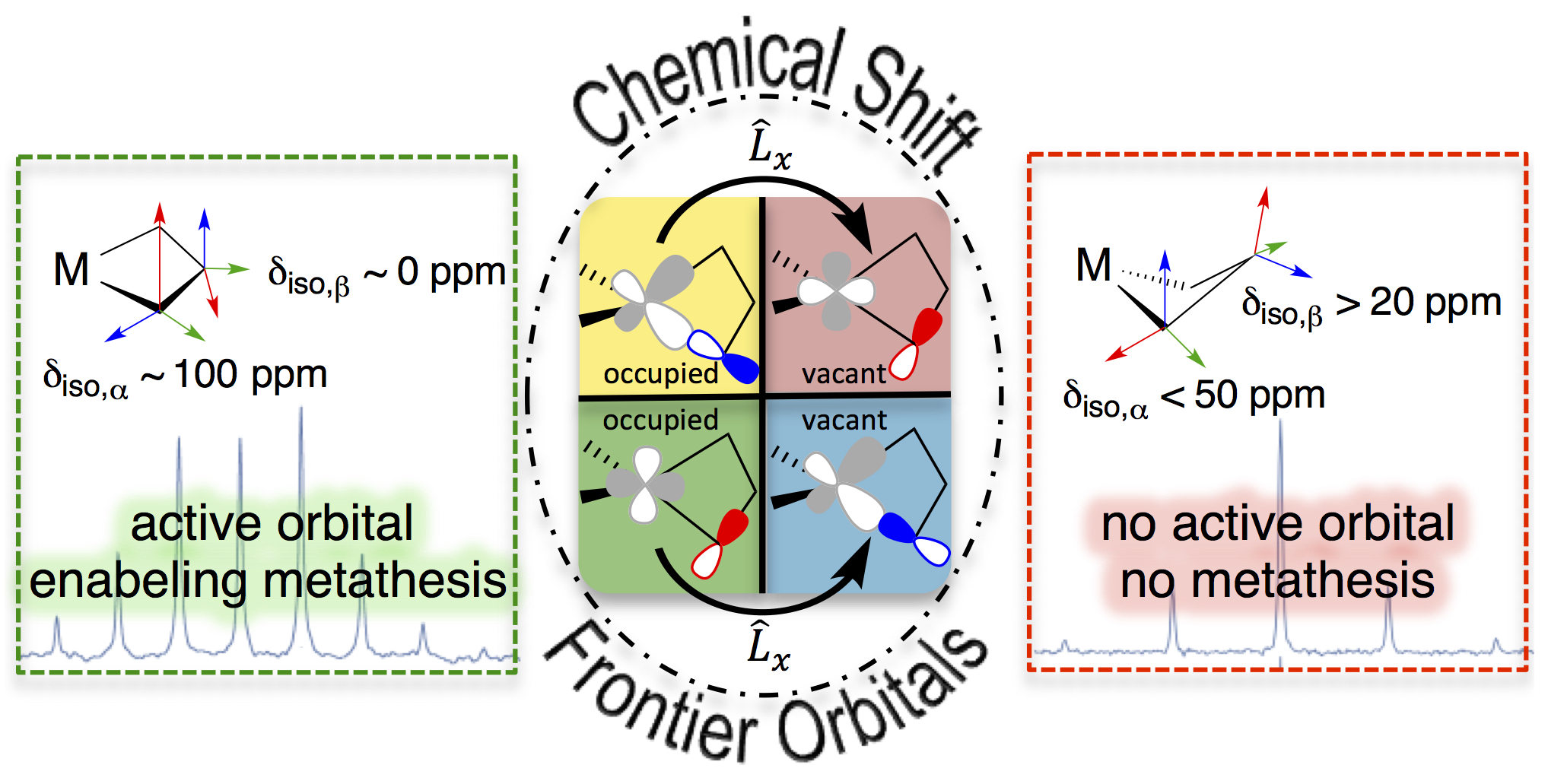Metathesis Activity Encoded in Metallacyclobutane Carbon-13 NMR Chemical Shift Tensor.
Metallacyclobutanes are an important class of organometallic intermediates, due to their role in olefin metathesis. They can have either planar or puckered rings associated with characteristic chemical and physical properties. Metathesis active metallacyclobutanes have M–Cα–Cβ–Cα’ torsional angles close to 0°, short M–Cα and M–Cβ distances, long Cα–Cβ bond length, and isotropic 13C chemical shifts for both early d0 and late d4 transition metal compounds for the α- and β-carbons appearing at ca. 100 and 0 ppm, respectively. Metallacyclobutanes that do not show metathesis activity have 13C chemical shifts of the α- and β-carbons at typically 40 and 30 ppm, respectively, for d0 systems, with upfield shifts to ca. –30 ppm for the α-carbon of metallacycles with higher dn electron counts (n = 2 and 6). Measurements and calculations of the chemical shift tensor combined with an orbital (natural chemical shift) analysis of the principal components (δ11 ≥ δ22 ≥ δ33) show that the specific chemical shift of metathesis active metallacyclobutane intermediates originates from a low-lying empty orbital on the metal of the correct symmetry to interact with a p-orbital on the α-carbon, perpendicular to the M–Cα axis in the metallacyclobutane plane. In the metathesis active metallacyclobutanes, the α-carbons retain some residual alkylidene character, while their β-carbon is shielded, especially in the direction perpendicular to the ring, evidencing the redistribution of electrons during the making and breaking of 2 σ- and 2 π-bonds during the metathesis process. Overall, the chemical shift tensors directly provide information of predictive value about the ability of metallacyclobutanes to function as olefin metathesis catalysts and allow distinguishing reaction intermediates from resting (off-cycle) states.
